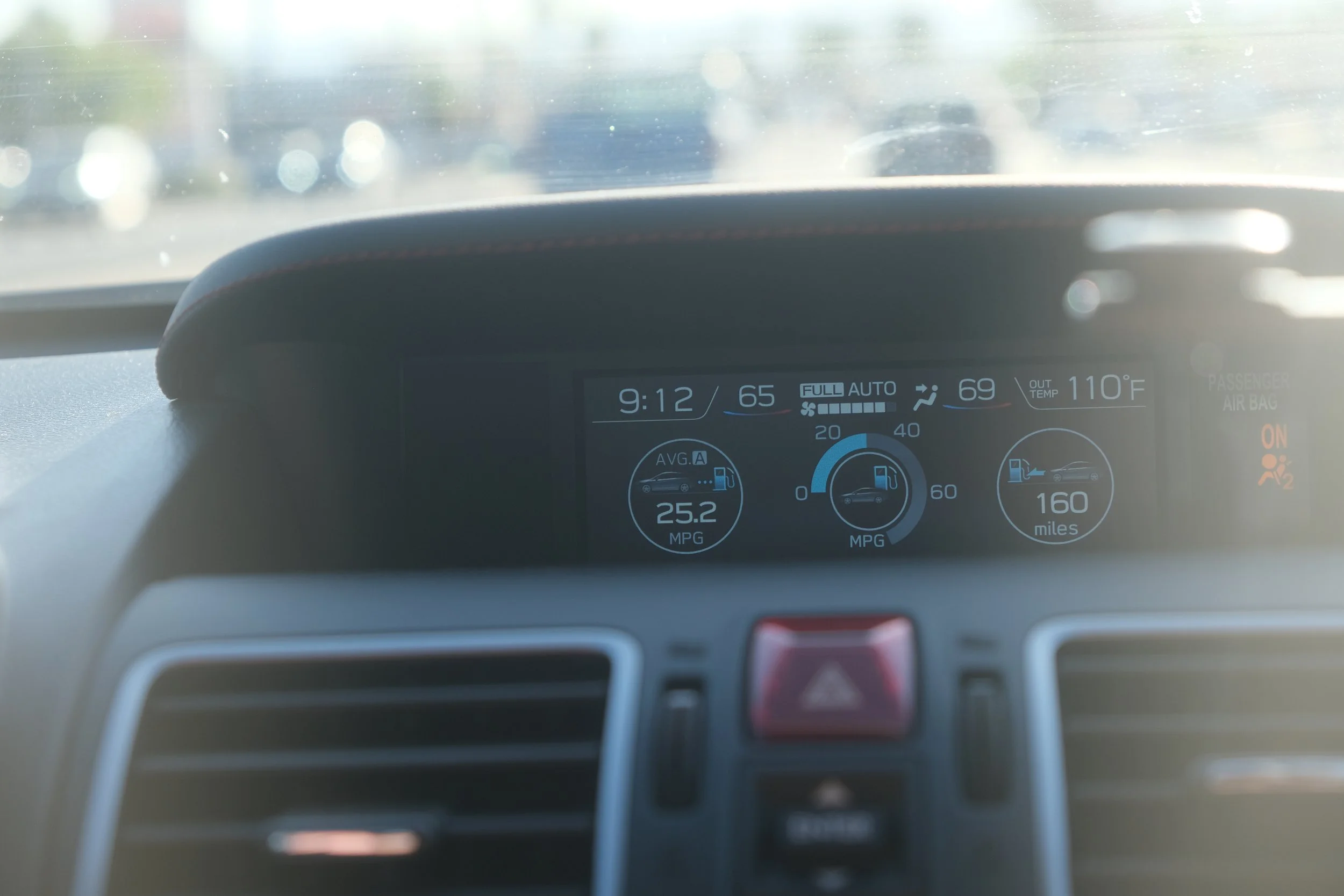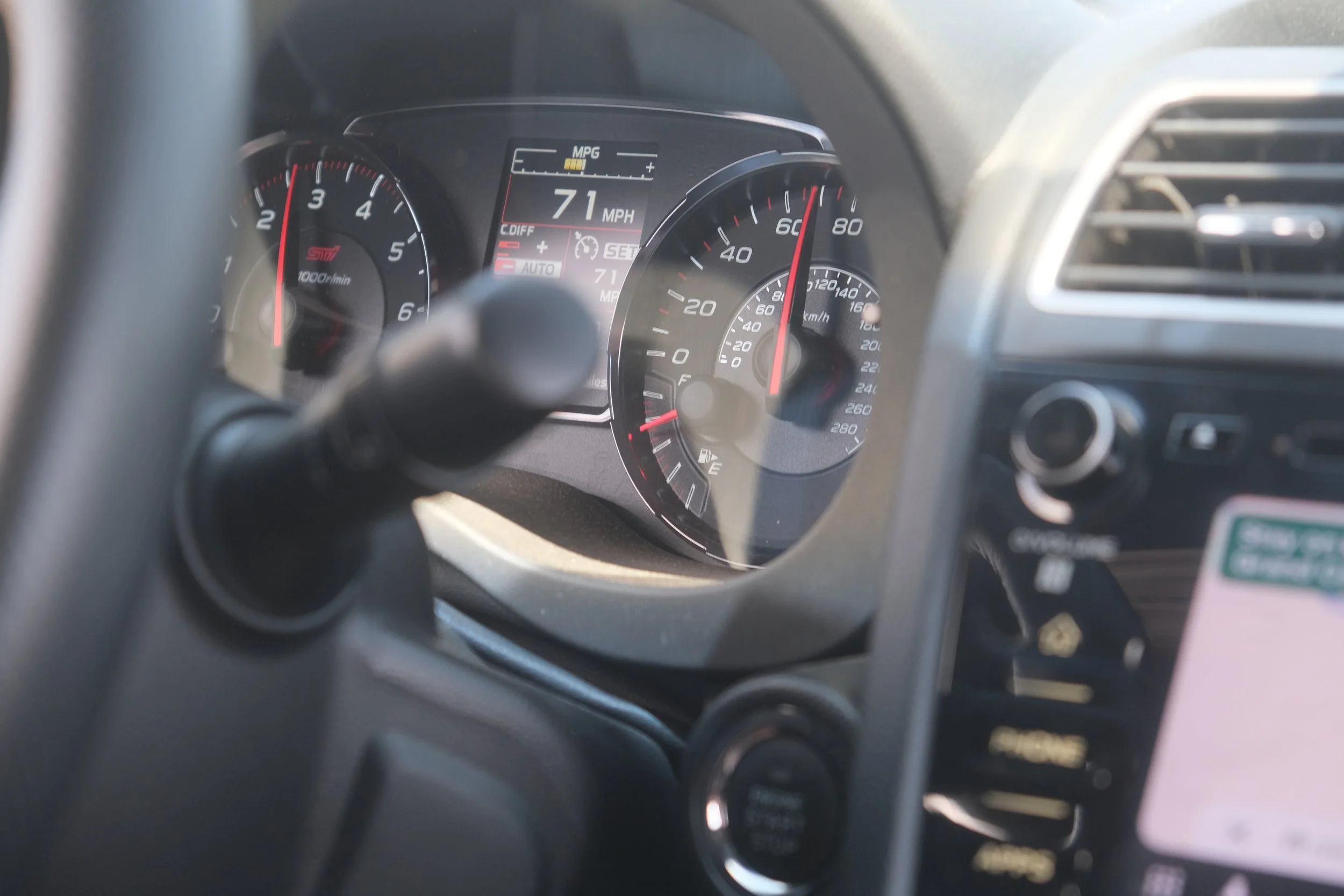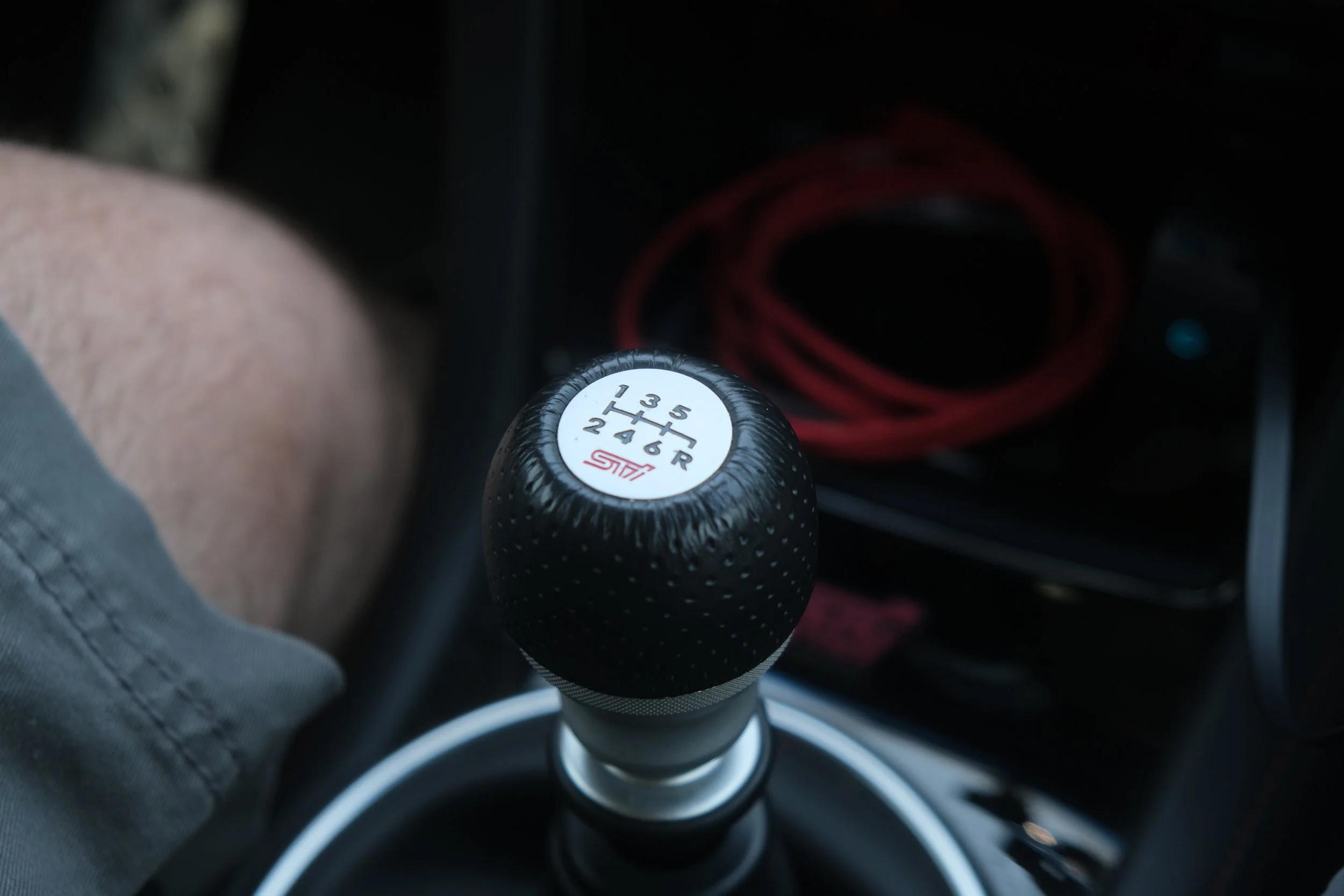“Why Wouldn’t It?”
After sharing stories from our 8,200-mile journey on Reddit, a fair and common theme emerged, best summarized by these real comments:
MainDino: "I’ve driven my 2018 STI across the US, coast to coast 3 times. Zero issue whatsoever..."
Hunt69Mike: "People act like these are supercars or something lol, not sure why anyone would expect issues..."
Meenmachin3: "Why wouldn’t it?"
And they're all right. A modern car should make a road trip. But this post is my deep-dive answer to that question—"Why wouldn't it?"—and an exploration of why this journey was a fundamentally different test than simply driving a new Accord across the country.
Why This Trip Was a True Torture Test
The unforgiving heat and stark environment of the salt flats
Let’s be honest. When you plan an 8,200-mile road trip, the smart money is on a proven long-hauler. You take the Honda Accord, the Toyota Camry, the RAV4, or the CR-V. You take a Tahoe or a Pacifica. Hell, the safest choice is probably a semi-truck, a machine literally built to swallow millions of highway miles.
We chose none of those. We chose the STi. And that choice is the one thing the "of course it made it" comments on Reddit seemed to miss. The risk was never that the car would suddenly fall apart like a '70s rust bucket. The risk was in asking a car known for being cool to also be comfortable and reliable under punishing conditions.
I'll never forget some of the advice I got when I bought this car, which perfectly captures its reputation in the enthusiast community: "It's fun to own, as long as you put money aside for when the engine blows—not if, when." That’s the cloud that hangs over these cars. That reputation—deserved or not—was the real test of this trip. We weren't just driving; we were rolling the dice, pushing a car known for being temperamental far beyond its intended use case.
And we were having an absolute blast doing it. But the potential for that fun to turn ugly was always there. I remember one specific stretch across West Texas. The sun had set, it was pitch black, and for hours the only things that existed were our headlights cutting a hole in the darkness and the drone of the exhaust. You're 500 miles from where you started and 300 from where you're going. It's in moments like that, in the middle of nowhere, that you remember you're not in a Camry. You remember the car's reputation, and you listen a little closer for any new, unfamiliar noise.
We subjected it to a 32°F mountain morning and a 112°F desert afternoon, all while being loaded down with two guys, gear, and—I’m not kidding—literal rocks. So while the trip was awesome, every trouble-free mile felt like we were beating the odds. That's the difference, and that's what made this journey a true test of faith in a flawed, brilliant machine.
The Drivetrain: The Unkillable Heart
At the Pacific. We stopped at the beach in Carpinteria to take in the sand and the water.
The heart of the STi is where all the legends and internet arguments live. Here’s how it really felt for 8,200 miles.
Let's start with reliability. Every morning, in a new city, I'd turn the key with a little bit of that "please start" superstition that any enthusiast has. For the most part, the EJ rumbled to life without drama. However, there were a couple of mornings—usually after a brutally long, hot day of driving while charging all our devices—where it took an extra two or three cranks to catch. Your heart absolutely stops for a second, you think, "is this it?", and then it roars to life and runs perfectly fine for the rest of the day. It never became a consistent issue and hasn't happened since we got home, but it was a little reminder that we were asking a lot of the car. Despite those couple of heart-stopping moments, the engine, with its notorious online reputation, was an absolute rockstar.
The manual transmission, however, was a tale of two distinct experiences. The joy, first: there was one decreasing-radius turn in the Malibu canyons where I grabbed third, then second, felt the engine brake perfectly, and powered out with the turbo whistling... that's it. That's the moment that makes the whole trip worth it. Its the moment you are fucking thrilled to have the STi and not a boring rental. It's a conversation between you and the car.
The part that wears on you over 8,200 miles isn't necessarily the traffic; it's the clutch itself. At home, we have a Focus RS and a Fiesta ST, and both of those clutches are built with ease of use in mind. The STi clutch is different. It's touchy and demands perfection with every single engagement. Around town, that's part of the car's raw, unfiltered character. But after your 500th clutch depression on a long travel day, that "character" starts to feel like a nagging, unforgiving chore. It doesn't want you to be lazy; it wants you to be perfect, every time, and that demand is mentally taxing over a long haul.
And the biggest surprise? Fuel economy. I’ve seen the comments from people suggesting they get way more out of their STi, but from my own research, I figured we should be thrilled with anything approaching 20 MPG on the top end, especially loaded down the way we were. We consistently averaged 22 MPG, even seeing 24 on some gentle highway stretches. For us, that was a massive, undeniable win and a welcome relief on the wallet.
Our most expensive fill-up. Malibu.
The beating heart of the STi
The Ride & Practicality: Where the Compromises Roar
Let's be clear about something: the STi's suspension, for a performance car, is fine. Around town or on a spirited drive, it does exactly what it's supposed to do. The problem on this trip wasn't the inherent "discomfort" of the car. It was the brutal combination of us being loaded to the gills—likely riding on the bump stops—and the thin, unforgiving sidewalls of performance tires.
That combination changes the game entirely. A bump that a Tahoe would barely feel became a catastrophic event in the STi. There were several moments, especially on rough patches of road north of San Francisco, that were so harsh they affected the whole car's mood for a while. You get that feeling of "we just fucked the whole car up."
For me, it's a feeling of mechanical sympathy. When the car takes a huge, unexpected hit, it feels like a personal failure, even when it’s unavoidable. It’s an icky feeling, a wince of empathy for the machine you're asking so much of.
And then there was the stretch of Highway 93 leading to the Hoover Dam, which, to put it mildly, can suck my whole ass. The road surface was atrocious, but the real fear came from the dashboard: 112°F. This is where the anxiety spiked. Breaking down because we hit a crazy patch of road wouldn't have just meant a bent rim or a call to AAA; it would have meant being stranded on the side of the road in the most dangerous, unbearable heat I have ever personally experienced. That was a different kind of worry.
The heat was no joke.
On the lighter side of practicality, the car managed to swallow everything we threw at it. The best example of our "just chuck it in" mentality came in Colorado. Our geologist friend, in a moment of pure passion for his craft, gifted us a couple of heavy, awesome rocks. We were so road-weary and delirious that saying "yes" to carrying literal rocks across six more states seemed perfectly logical.
The command center.
The Real Issues: Death by a Thousand Papercuts
For a car with a reputation, it never had a catastrophic failure. Instead, our challenges came in the form of two small, character-building, and incredibly annoying travel companions.
The first was our ghost in the machine: the TPMS sensor. That little blinking orange light became a third passenger on our trip, and it was a terrible conversationalist. Its favorite topic was existential dread. After the genuine flat tire on day one, its mood swings dictated our own. Every time it came on, it triggered a mini-crisis and a familiar script: "Is it real this time? Are we losing pressure? Should we pull over on this busy highway or wait for the next exit?" The feeling of finally buying a $5 tire pressure gauge at a gas station was pure liberation. Being able to check the pressure ourselves in 30 seconds felt like finally winning a long, frustrating argument and silencing our nagging electronic ghost.
Our second companion was more visible. The passenger-side fog light cover didn't just fall off; it made a dramatic escape. Somewhere in a blinding Texas thunderstorm, it decided it had had enough and ejected itself into the void, leaving the car with a "missing tooth" for the rest of the journey.
When we looked up the part, it wasn't the worst news—about $100 to $200, depending on the route we took. The real gut punch was the realization that this ugly gap would now be in every single photo for the next 6,000 miles. At Prada Marfa, the Grand Canyon, the Salt Flats... the missing tooth would be there, a constant reminder. Ryan asked if we should start hunting harder for the part, calling dealerships along the way. I resisted, for two reasons.
First, we simply didn't have time. We were on a schedule, and the idea of calling around, waiting for shipping, and spending time at a dealership wasn't an option.
But the second reason was more important. I started to see the missing piece as part of the story. It was the reality of the trip, right there in the photo. It was a visible battle scar, a constant reminder that this adventure didn't go perfectly, and that it's okay—and more honest—to be real about it. We were pushing this car, and it pushed back in its own small way. That missing tooth became a souvenir from the road, a mark of authenticity that a perfect car just wouldn't have.
The Final Verdict
So, back to the original question from all those Reddit comments: "Why wouldn't it?"
The simple truth is, I never truly thought it would have a catastrophic, trip-ending failure. The real question, the one that sat in the back of my mind for 8,200 miles, was how it would endure. We were flying close to the sun, and we knew it.
This car didn't just survive some miles. It survived the absolute hardest, most punishing 8,200 miles it will likely ever be asked to do in its entire life. It was overweight, subjected to extreme temperatures, rattled on terrible roads, and driven for marathon days. It absorbed all that abuse, and its only complaints were a moody sensor and a piece of trim that bailed. All things considered, it was nearly flawless. That's what I find so impressive.
And in the end, that's why you do it.
You do it because a Camry won't give you the story of a geologist's rock thudding in the trunk. A RAV4 won't give you the visceral, stomach-in-your-throat relief of finding an intact rim after a brutal pothole. And no crossover on earth can replicate that perfect downshift in a Malibu canyon. You take a car like the STi not for the easy parts of the trip, but for the hard parts that make the good parts feel truly earned.
So if you're thinking of taking your fun car on that trip of a lifetime, here’s my final take: Know the possible issues. Have an idea of how you would deal with them—a tire gauge, some money set aside, a good attitude.
And then go. Go enjoy the car you purchased for the exact reason you bought it: because you fucking love cars. Go make some stories.








